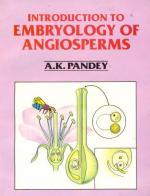|
This section contains 2,293 words (approx. 8 pages at 300 words per page) |

|
The angiosperms, or flowering plants (division Anthophyta or Magnoliophyta), comprise more than 230,000 species and are thus by far the largest division of plants; they represent the dominant group of land plants today. In both vegetative and floral morphology the angiosperms are highly diverse. In size, for example, they range from the duckweeds (the genus Lemna), which are roughly one millimeter in length, to Eucalyptus trees, which are well over one hundred meters. Although all are characterized by the possession of flowers, these structures are also highly diverse in form and size. The smallest flowers are less than a millimeter in size (the flowers of duckweeds) while the largest flowers are approximately one meter in diameter (the flowers of Rafflesia). Features unique, or nearly so, to angiosperms include the flower; the presence of seeds within a closed structure (actually a modified leaf) referred to as the carpel; the reduction...
|
This section contains 2,293 words (approx. 8 pages at 300 words per page) |

|


